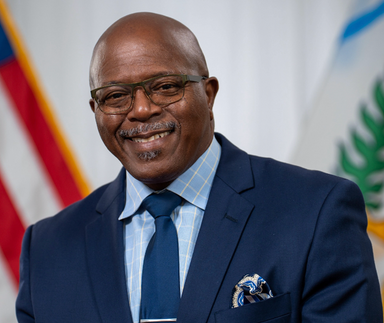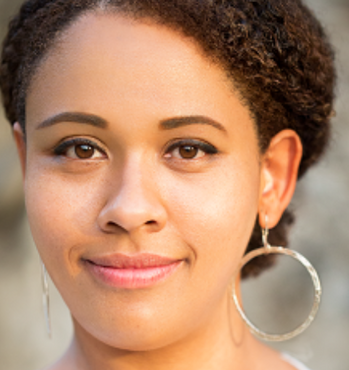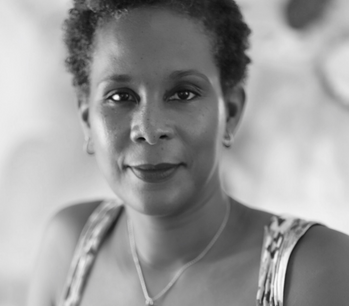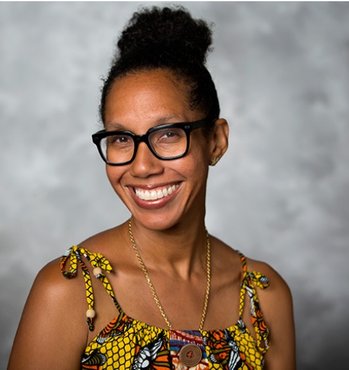BLOG
Reflections on and beyond The Fireburn by scholars, activists, descendants of the Fireburn rioters and others engaged in the histories
Frandelle Gerard
Executive Director, Crucian Heritage and Nature Tourism, Inc.
October 1, 2023
145th Anniversary of the “Fireburn” Labor Revolt on St. Croix
Today we commemorate the uprising of the beleaguered men and women of St. Croix whose fight for freedom in 1848 had been vanquished by the imposition of Labor Laws by the Danish government. The fight for freedom from chattel slavery, freedom for self-determination, freedom of self-expression, is an ongoing fight of the descendants of the women and men who waged war against inhumane systems that denied the full humanity of the people of African descent in the former Danish West Indies and beyond.
Sankofa – “Go back and fetch it” – The words of our African ancestors who waged battle against intolerable conditions and subjugation are now becoming available to all on Fireburnfiles.dk. The site provides students, scholars, and lay people the opportunity to research events leading up to the “Labor Riots” and the outcomes. The site provides access to information, previously limited to those with the resources to travel and with access to interpreters. This access gives agency to those seeking to understand and interpret the historical events and will enable artists, scholars, students to “go back and fetch” information from the past to build their knowledge and inform their future!
Our work in the cultural heritage sector has benefited from the dedicated work of the volunteers who have identified and translated documents in the Danish National Archives digital collection. Exhibitions have been enhanced by the information on the site allowing visitors to engage with documents and historical images regarding the Fireburn. The engagement of the community through these exhibitions has led many to the Fireburnfiles.dk website to continue their research and expand their knowledge. We anticipate an increase in the use of the information as more students are exposed to their history through the exhibits, papers, and installations, created by researchers and artists highlighting the people, places and events leading up to the Labor revolt on the island of St. Croix in 1878.
2023 is a momentous year, marking the 175th anniversary of Emancipation of enslaved people in the Danish West Indies and the 145th anniversary of the Labor revolt – Fireburn – on St. Croix. The commemoration of these dates keeps the spirit of resistance alive in the people and highlights the importance of unified action to achieve results in the struggle against oppression. The action of revealing the written history of our ancestors and their lived experiences reveals their full humanity in a society designed to deny it. We honor their memory by speaking their names, the Queen’s of Fireburn – Queen Mary Thomas, Queen Mathilda McBean, Queen “Agnes” Axeline Elisabeth Salomon and “Bottom Belly”, Queen Susanna Abrahamson!
Myron D. Jackson
Retired senator, community activist, cultural preservationist, local historian and artist
Sankofa
1. October 2022
My earliest recollections of the saga of the “Firebun” that occurred on October 1, 1878 on the island of St. Croix, Danish West Indies was as an elementary student when we were given the text book Up and Down The Virgin Islands by Lillan S. Andersen. As a visual learner the illustrations in the book propelled me to learn more about Virgin Islands history and my own family origins and history which has been an ongoing life mission. The other memorable references to the “Firebun” were from the folksong Queen Mary that was sung and played at dances by our native musicians, and a recollection of one of my visits with my mother to visit a Crucian cousin Elsa Canton who had migrated to New York City from St. Croix in the 1920s. As we sat in her stately living room, located in the housing community on the east side of Harlem, I was struck by the presence of two framed photographs, one of her father, and the other of two women relatives beautifully dressed and accented with madras headties. My presence in the midst of my mother and elder cousin in conversation and with the rule that children were seen and not heard, I took my space in the room and captivated by the stories being told. As if I was glued to the chair I sat in awe and was captivated as Cousin Elsa’s Crucian “tongue” dialect, commanding queenly stature, and dark complexion recounted the family linage. The mention of Mary Thomas, known as Queen Mary, and links to the Andrew(s) and Canton clan peaked my curiosity. Her graphic recollection of her physical appearance as being dark, heavy and thick, and her connection to our family fascinated me. I documented this account with pen and paper and over the last five decades it has been a cherished document in my family archives as I search the records for confirmation of this oral history account.
Today, as Virgin Islanders, “In Search of Identity”, revisit their oral and family history and conduct research using the Danish archival records the chronicles of the accounts documented of the “Firebun” of October 1, 1878 provides us with an in-depth insight of the many ancestors and personalities forgotten over time that were an important part of this saga and historic milestone in our history. The tedious task of translating these records to English allows us to be an active participant in revisiting our identity, colonial past, history, culture, advance our intellectual capacity, our present and future hopes and aspirations. It provides us the mechanism to tell our side of the story and to advance Virgin Islands history, scholarly research, family genealogy, writing and publishing, and a greater sense of pride and achievement.
The proverbial saying “Sankofa” which is a word in the Twi language of Ghana means “go back and get it” which is symbolized by a bird with its feet facing forward and its head looking back. The symbol and sprit of Sankofa encompasses taking from the past what is good and bringing it into the present to make progress in the future.
S A N K O F A
La Vaughn Belle
Visual artist. La Vaughn Belle makes visible the unremembered. Borrowing from elements of architecture, history and archeology.She is the co-creator of “I Am Queen Mary”
Queen Mary, where we gon guh buhn
1. October 2021
I was recently on a podcast and was asked the question, what would you say is the phrase or saying that best captures where you are from? I thought for a while as in the Virgin Islands we have so many interesting phrases; but I chose a phrase- or a verse to be more specific- from a song we learn in childhood about a woman called Queen Mary, and in the song we say, “Queen Mary, tis where you gon gun buhn?”. Common in oral traditions there are variations on the song. Sometimes it’s “Where we gon guh buhn?” or “Where we ah go buhn?”
This song references a historic woman named Mary Thomas who was originally from Antigua but came to the Virgin Islands in the latter part of the 19th century to work in the sugarcane industry when we were still under Danish colonial rule. She emerged as one of the most popular leaders of the ‘Fireburn’ labor revolt which occurred on the island of St. Croix in 1878. As the name suggests over 50 plantations were burned and part of the town of Fredkersted in protest of the slavery-like living and working conditions.
“Queen Mary, tis where you gon guh burn?”
This is the phrase that I said best encapsulates the ethos of the Virgin Islands for several reasons. For one, we learn that we have ancestors that we can speak to. We also learn that they will speak back. We learn that they are rebels and that we are rebels too evidenced in the last line where we agree to burn down a place called Bassin Jail. We learn that somewhere between the past and the present, between hope and action, between call and response, between me and we is the concept of queendom unlike the one we learn about in fairy tales. This queendom is not about what is hereditary; it's about what is in the imaginary. It’s about who we can imagine ourselves to be? And we imagine ourselves to be like Queen Mary
Mary Thomas was not alone. She was one of hundreds of people who participated in the largest labor revolt in Danish colonial history. She along with three other women- Axeline Solomon, Susanna Abrahamson, Matilde Mcbean- are remembered in our cultural history as the Queens of the Fireburn. This is partly because of their carcerality as all four were arrested for their participation in the revolt and sentenced to death. Later this sentence was commuted to hard labor and they were sent to prison in Denmark for several years. For reasons uncertain they were released and sent back to the Virgin Islands and upon their return became legends.
Queen Mary stands apart not only because we sing songs about her or because we have a highway named after her, but because her prison records suggest an explanation for why she was the most popular queen. Unlike the other women’s prison records, on Mary Thomas' records it states that she was called a Queen. What this shows is that the collective agency of her queendom was so powerful that it penetrated the penal records of the Danish colonial state. It may also suggest that she is the only one who was a queen before the Fireburn. This queendom comes out of an African Caribbean tradition of women being called a queen for their leadership role in the community. Like other concepts of queendom ours is about power, but also about collective agency.
“Queen Mary, where we ah go buhn?”
Like so many artists in the Virgin Islands, I too have been inspired by the legacy of the Queens of the Fireburn. She and the other queens have been depicted in a myriad of ways: in jewelry, in song, in plays and other reenactments, on t-shirts, murals, banners, paintings, sculptures and monumental public art. Over the last several years I have been working on a public art project, with Danish artist Jeannette Ehlers, entitled I Am Queen Mary. What makes this project unique is that it’s a transnational collaborative project between two artists from either side of the Atlantic- one from the former colonizing country and the other from the colonized country. It is also a totally artist-driven project and one in which we have pushed in the public space and opened dialogue to contest colonial history, and who and what must be remembered.
In our depiction Queen Mary sits barefoot in worker's clothes holding a cane bill in one hand and a torch in the other on top of a plinth made of coral stones that were carved out of the ocean by enslaved Africans. These tools function as symbols of resistance, as many rebellions in the Caribbean were fought with those same tools, including the Haitian revolution and the Fireburn. The stones operated a physical foundation of the figure gesturing towards the impact of slavery as the foundation of wealth of many modern European societies. It is a symbolic reminder of that labor and the human beings who survived and persihed in slavery.
In a plantation system in which a Black woman's body was valued for being laborer and vessel by which to produce more laborers, the selection of a seated pose is a radical defiance of purpose. She exudes presence and power in a similar way to the iconic image of Huey P. Newton was intended to transmit as leader of the Black Panther Party. By reenacting this pose, we make connections to the African diasporic legacies of resistance against oppression. We also center a narrative of women leading that charge.
“Queen Mary, where we gon guh buhn?”
As we work towards making the monument in Denmark permanent and creating a version in the US Virgin Islands we have embarked on a crowdfunding campaign (see link here) to allow for everyone to feel a sense of ownership of this history. I Am Queen Mary is an exercise of the imaginary. Just like the song refrain it is an exercise of asking questions. It is exactly the questions we ask of ourselves, of the archives and of our memory that will lead us to a more just and equitable future.
Tiphanie Yanique
Associate Professor English and Creative writing, Emory. Novelist, poet, essayist and short story writer.
Her new novel, Monster in the Middle, is out on October 19, 2021
The Fireburn Files are invaluable.
31. March 2021
It is really very hard to overstate how needed the material found here is for the peoples’ whose ancestors were involved in the 1878 St. Croix labor revolt called The Fireburn. While I hope Danes will find this material deeply interesting and incredibly important—Virgin Islanders will find that, and more. For us Virgin Islanders the Fireburn is a real moment in our history but it is also a mythical event that is held up metaphorically in the culture. In the Virgin Islands women might wear machete earrings or pendants. “Firburn!” is a declaration made when you feel strongly that something needs to be dismissed or even destroyed. We sing songs about the Queens, as the women involved in the revolt are called. We think in nuanced ways about the intersection between Western Queendom and our VI Queendom. But so very much of this knowledge has been mythical and metaphoric…but not based in detailed history. Indeed, the history has been actively kept from us—by the distance of the files being in Denmark and in Danish. This website removes those distances.
One of the most useful aspects of the Fireburn Files is the never published notes from Judge Rogenstand. Here we can see evidence for five queens, not the four scholars now think, or the three referenced in popular culture. We also see that a number of men, Kings, were involved, but because they were immediately executed, they have not been given their place in our cultural narratives. Like these files, many of the documents in the Fireburn Files have not yet been digitized or translated, or either. One role of this website is to resist silences on this major part of Danish and Virgin Islands history.
One thing that I am most grateful for is how this website will help to center this Danish West Indian rebellion within the history of Caribbean rebellion against European power. Now that this material is so clearly and widely presented, it will be harder for Denmark to think of itself as a European exception during the era of global colonialization. And most importantly to me, Virgin Islanders will be able to point more assertively to this moment in VI history as part of the Caribbean narrative of rebellion. As the VI has not yet gained independence, it is often read by its regional counterparts as being a space of passivity. We know about Nanny of Jamaica. We know about Toussaint of Haiti. The region may now come to know the Queens and Kings of the of the Virgin Islands.
Tami Navarro
Ph.D., Associate Director, Barnard Center for Research on Women
What is the role of archives ?
1. January 2021
What is the role of social justice vis-à-vis colonial archives? When the Danish sold the then-Danish West Indies to the United States in 1917, they took much of the archived history of these islands with them to Denmark—where they remain today.
As we attempt to grapple with the presence of Black residents of the then-Danish West Indies in documents and imagery in these Danish colonial archives, we are confronted with the reality that their lives and experiences remain hidden from view and largely unexplored.
As we attempt to read images which depict Black residents of the Danish West Indies, we are confronted with racist tropes, but also—for many Virgin Islanders—with the possibility of encountering community members and ancestors.
How archives are situated—and experienced—in different contexts is crucial. That is, rather than viewing archives as static repositories of information, I push us to consider significance of the context within which archives exist.
Virgin Islands Studies Collective (VISCO) want to create space for the recontextualization of archives of the Virgin Islands: As an example, while historical figures like ‘Queen’ Mary Thomas are remembered in Danish archives as colonial subjects, troublemakers, and prison inmates who led uprisings, they are celebrated as cultural heroes and forebears in the Virgin Islands. It is important to engage with these questions of race, remembering, and social justice as they relate to the unfolding history of the US Virgin Islands.



